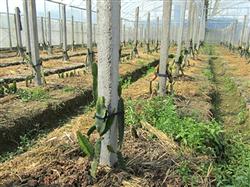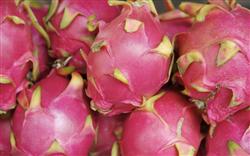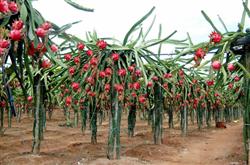How to plant dragon fruit?

How to grow dragon fruit well? Please introduce planting methods and management methods Pitaya planting can refer to the following methods: I. Biological characteristics Pitaya belongs to tropical and subtropical fruits, drought tolerance, high temperature resistance, light preference, lax soil requirements, flat land, hillside, sand land can be planted, the most suitable soil pH value is 6-7.5, it is best to choose rich organic matter and good drainage land for planting. Pitaya is not resistant to frost, and simple greenhouses are used in areas where the winter temperature is lower than 0℃. II. Cultivation methods Pitaya planting methods are various, can climb the wall planting, can also build a shed planting, but column cultivation is the most common, its advantages are low production cost, high land utilization rate. The so-called column cultivation is to erect a concrete column or wooden column, plant 3-4 pitaya seedlings around the column, and let the pitaya plants grow upward along the column. Three, planting specifications double season The row spacing of each column is 1.5m× 2m. If 4 seedlings are planted around each column, 750 seedlings can be planted per 667m2. Pitaya can be planted all year round, pay attention not to deep planting, planting about 3cm deep can be, the initial stage should keep the soil moist. IV. Field management Pitaya flowers and bears 12-14 months after planting. It can flower 12-15 times a year. April to November is the fruiting period. The fruit matures 30-40 days after flowering. The weight of single fruit is 500-1000g. In the second year after planting, more than 20 fruits are produced per column. In the third year, it enters the peak fruiting period. The yield of higher management level can reach 2500kg/667m2. The key points of high yield cultivation are as follows: 1. Thin fertilizer and frequent application: due to the long harvest period of fruits, organic fertilizer should be applied every year, and nitrogen, phosphorus and potassium compound fertilizers should be applied in a balanced manner for a long time. Potassium and magnesium fertilizer should be supplemented during flowering and fruiting period to promote sugar accumulation and improve fruit quality. Keep soil moist during fruiting and cover tree trays with grass or mushroom residue. When the weather is dry, irrigate water once every 3-4 days. 2. Topping: Topping when the branches grow to 1.3-1.4m long, promoting branching, and allowing the branches to droop naturally. 3. Interplanting and artificial pollination: When planting pitaya, about 10% white flesh type pitaya should be interplanted. Pollinating each other among varieties can obviously improve seed setting rate. In case of rainy weather, artificial pollination should be carried out. Pollination can be done in the evening or early morning before the flowers close, with a brush directly to the female flower pollen on the stigma. 4. Pruning branches: after picking fruit every year, prune the branches that have borne fruit and let them re-shoot to ensure the next year's yield. 5. Pest control: pitaya has fewer pests and diseases, and is vulnerable to snails and ants in seedling stage, which can be controlled by pesticides; it is easy to infect diseases in high temperature and high humidity season, and partial necrosis and mildew spots of branches can be controlled by triadimefon and strong copper oxide, with good effect. Click for more pitaya planting technology Click for more fruit planting technology
- Prev

Why does pitaya crack when it ripens?
Why does pitaya crack when it ripens? How should it be prevented? Please introduce the following methods to prevent cracking when pitaya matures: 1. Spray 20ppm cytokinin and 1000 times farmer calcium every 10-15 days during flowering. To promote the proliferation of fruit embryo cell number with cytokinin, so as to facilitate...
- Next

Can I apply foliar fertilizer to grow dragon fruit?
Can I apply foliar fertilizer to grow dragon fruit? Please give a detailed description of the dragon fruit can be applied foliar fertilizer, the first thing to understand the dragon fruit plant surface characteristics. It is native to the arid zone of South America and belongs to the perennial vine of Cactaceae. It has the physiological and ecological characteristics of drought-adapted plants, as shown in the picture on the right.
Related
- Moge, come on! The staff of the peasant association in the producing area of cantaloupe were frightened when the crowd gathered.
- Causes and Solutions of low Fruit setting rate of Apple
- Symptoms and control measures of passion fruit virus disease
- Fruit growing lesson: how do apple orchards keep high yields?
- Can you build orchards in the mountains? What are the pros and cons?
- How to manage the coloring period of Crisson grape?
- This paper introduces the processing technology of two kinds of fig products.
- How much is a month for retired teachers in rural areas by 2020?
- How can strawberry planting increase sugar content? We should pay attention to management in many aspects.
- What are the cultivation techniques on how to improve the yield of golden fruit?

